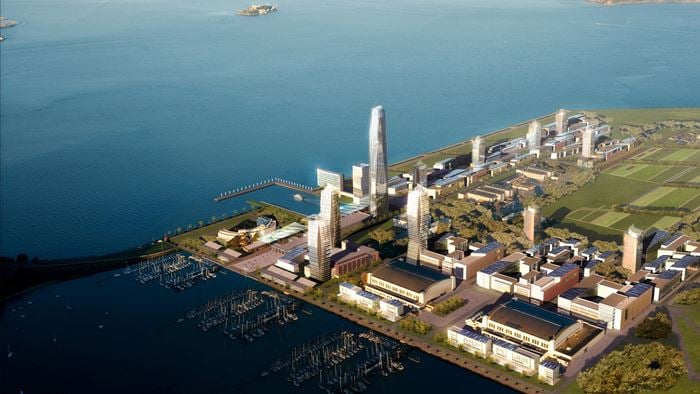Perhaps the most sensitive, heart-breaking, yet necessary action we will have to take in this next century is abandoning our coastal cities as climate change threatens their very existence.
A study in the journal Nature shows that flooding could cost the world’s coastal cities more than $60bn per year in total by 2050. And that’s only if they take mitigation measures. If they do nothing, the cost could soar to $1tn per year.
Research from the National Oceanic and Atmospheric Association (NOAA) suggests a sea level rise of more than six feet by 2100. Looking further ahead to the most extreme case, National Geographic magazine recently examined what would happen if all the ice on Earth melted. It found that sea levels would rise by over 200 feet, wiping out the entire US Atlantic Seaboard along with London, Shanghai, Buenos Aires and many other major global cities.
All the resilience measures in the world couldn’t prevent that scenario. But even a six foot sea level rise doesn’t seem to be a risk that people are prepared to think seriously about, despite the wake-up calls delivered by disasters like Katrina, Sandy and now Haiyan.
In the wake of Hurricane Sandy, the Governor of New York State launched a scheme offering to buy back property in the most vulnerable areas at its pre-storm value. The response has been mixed; as many people would rather stay, try to rebuild stronger and take the risk. However, many experts believe that increasing insurance will drive residents away and keep potential home buyers out. As British futurist, James Martin recently noted, the climate change real estate boom is coming.
For now, mitigation measures can certainly help us reduce those risks. Improved flood defences and beefed-up building codes will certainly buy coastal cities some time. Rolling Stone magazine featured an article titled ‘Goodbye, Miami’ painting a brutal yet real picture of the vulnerabilities South Florida cities faces.
If the worst predictions for the effects of climate change come to pass, nothing will protect some coastal cities. So surely, it would make sense to abandon them (or segments of them) and start again somewhere inland, where the flood risk is lower.
Abandoning cities is nothing new. Throughout history, cities have come and gone with the rise and fall of civilisations and changes in the environment. Ancient societies in Easter Island, Greenland and Central America could not have foreseen their collapse due to environmental reasons. More recently, cities have taken a downturn due to economic reasons, such as Detroit, whose population has declined by 60% since 1950.
We didn’t see the recent global economic downturn coming or predict its impact on already-troubled Detroit. However, we do know that climate change and sea level rise is a forgone conclusion and that it will affect coastal cities in particular.
So what can we do? Firstly, we have to continue protecting our coastal cities and their most critical housing and infrastructure assets, yet must also accept that we may eventually have to abandon some cities. Secondly, with this eventuality, we must start planning now – before nature forces our hand. As well as making existing cities resilient in the medium-term we have to consider whether a longer-term plan for new cities is needed – depending on the specific risk factors at each location.
As the world’s population continues to urbanise, I think whether and when to abandon a city (particularly as cities continue to grow) will become an increasingly sensitive and pressing problem. It’s one we should start thinking about now.
 ;
;




